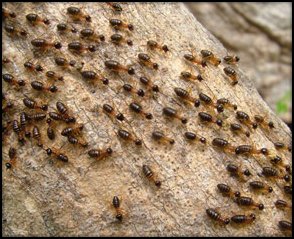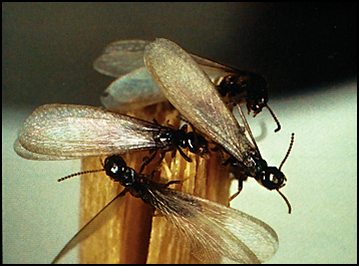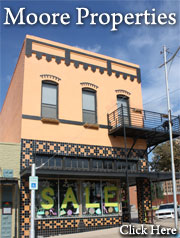




There are about 45 different kinds of species of termites found in the United States.
each species has a unique biology and behavior that impacts what part of the
country they live in, where they build their nests and their likelihood to damage
homes.
Termites are social insects and live in colonies with a highly organized social order,
much like ants or bees. Each colony includes three levels of termite society:
workers, soldiers and reproductives. Each termite group is assigned a specific job
to keep the colony alive, such as the workers who gather food, soldiers who build
shelter and reproductives who produce and tend to the young (larvae).
The colonies' king and queen are known as primary reproductives, as they are the original founders of the colony. Reproductives
are the reason new colonies of termites are formed and move into your home and neighborhood.
Termites subsist on cellulose, which they get from wood. They eat non-stop, 24 hours a day, seven days a week! While termites
only measure approximately 1 cm to a few millimeters in length, their feeding habits are capable of causing considerable damage
to property (up to $5 billion in damage per year!) House foundations, furniture, shelves and even books are all possible feeding
sites for termites.
Of all of the different species of termites found in the U.S., there are two types that are most likely to damage your home -
Drywood Termites and Subterranean Termites. Each type is different and must be treated separately. Southwestern A-1 Pest
Control can help you determine whether or not you have a termite problem, what kind of infestation you have and create an effective
plan for dealing with it.
Drywood Termites
Drywood Termites are approximately a 1/4 to 1/2 inch in size and pale to dark
brown in color. They are found more commonly in coastal areas such as Houston
and Corpus Christi. They do not need soil contact to live, but rather make their
homes inside of walls or other dry wooden building materials. They can also be
found living in the branches of dead trees.
Drywood termites form colonies of up to 2,500 members. When a colony has
matured, winged, swarming termites can be seen around windows and doors.
Winged termites are highly attracted to sources of light and are most active in
springtime. After mating, these termites locate a new breeding site and create
another colony, spreading infestations throughout multiple locations.
Since these termites build their nests and dig tunnels in dry wooden buildings.
They can be very destructive and cause major damage to the wooden support
beams and structure of any building causing it eventually to lean or collapse.

Subterranean Termites
Subterranean termites are the most common and the most widely
spread termite species in the United States. They are found in many
locations throughout Texas. They are approximately 1/2 - 5/8" in length
and pale to reddish brown in color.
Subterranean Termites need moisture to survive and usually live outside
the house in moist underground nests or in wet areas above ground.
Their homes are built of mounds, elaborate tunnel systems and mud
tunnels and they use these mud tunnels to gain access to above-ground
food sources. Since subterranean termites need cellulose to live, they
often tunnel into nearby homes to get it.
Subterranean termites ususally return to the soil to live and reproduce. Every Spring, groups of reproductive termites fly off to start
new colonies.
Because subterranean termites will not only ruin the aesthetics of a house or a wooden building, but also create severe structural
damage to them over time, it is extremely important to gain control of subterranean termites as soon possible.
Subterranean termites are the most destructive kind of termite. They can eat a lot of wood and they can cause a lot of expensive
damage to a house!

LEARNING CENTER




